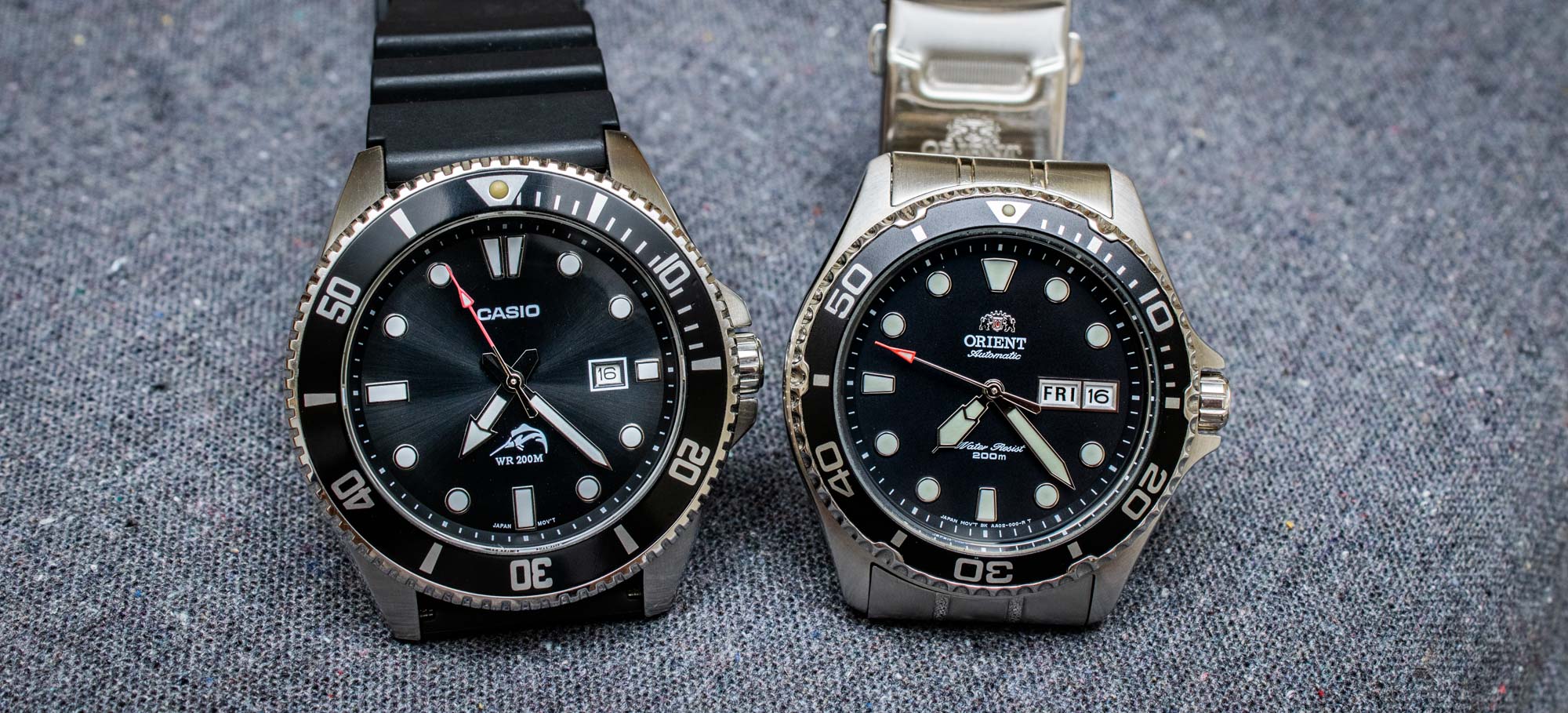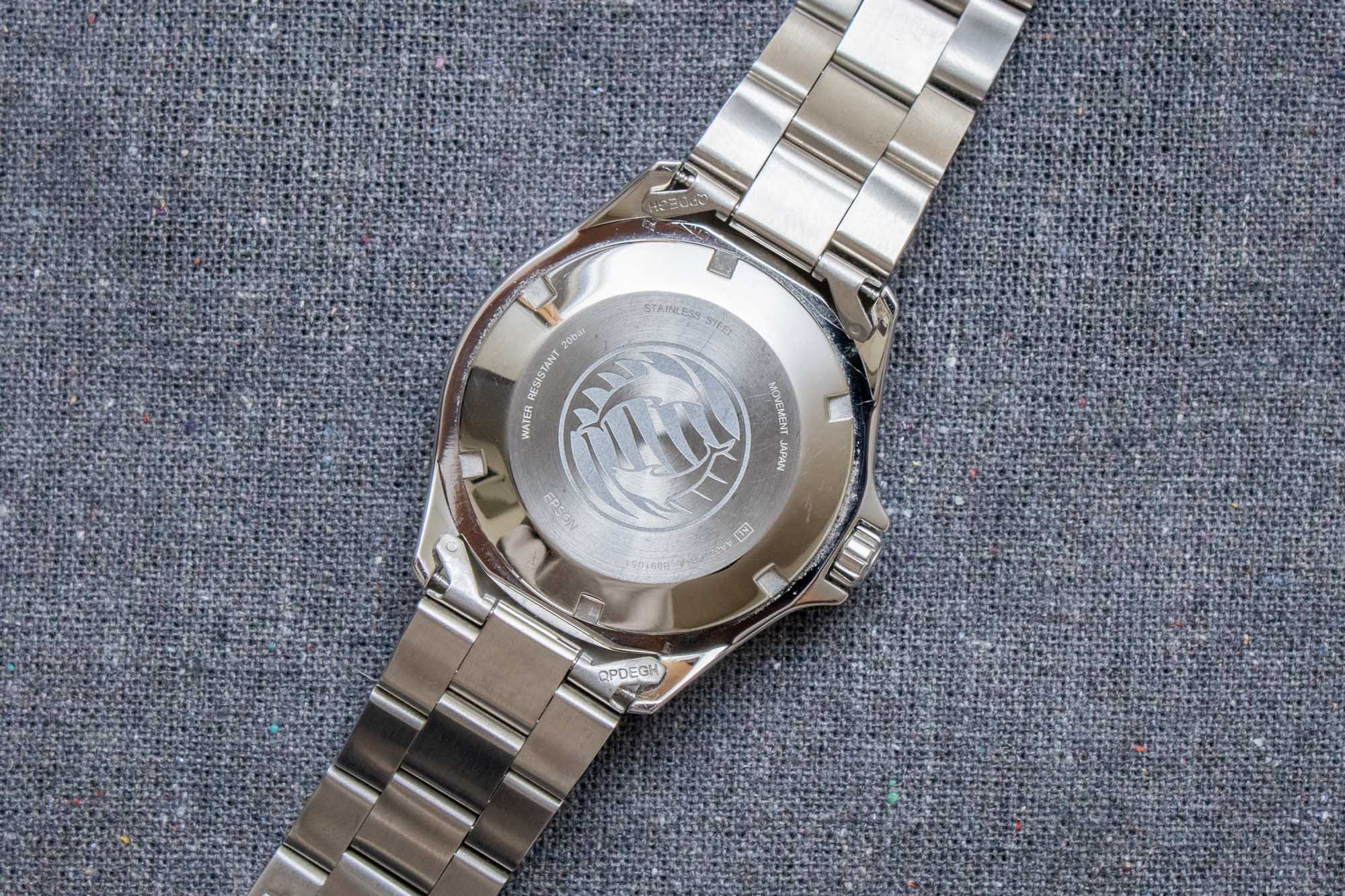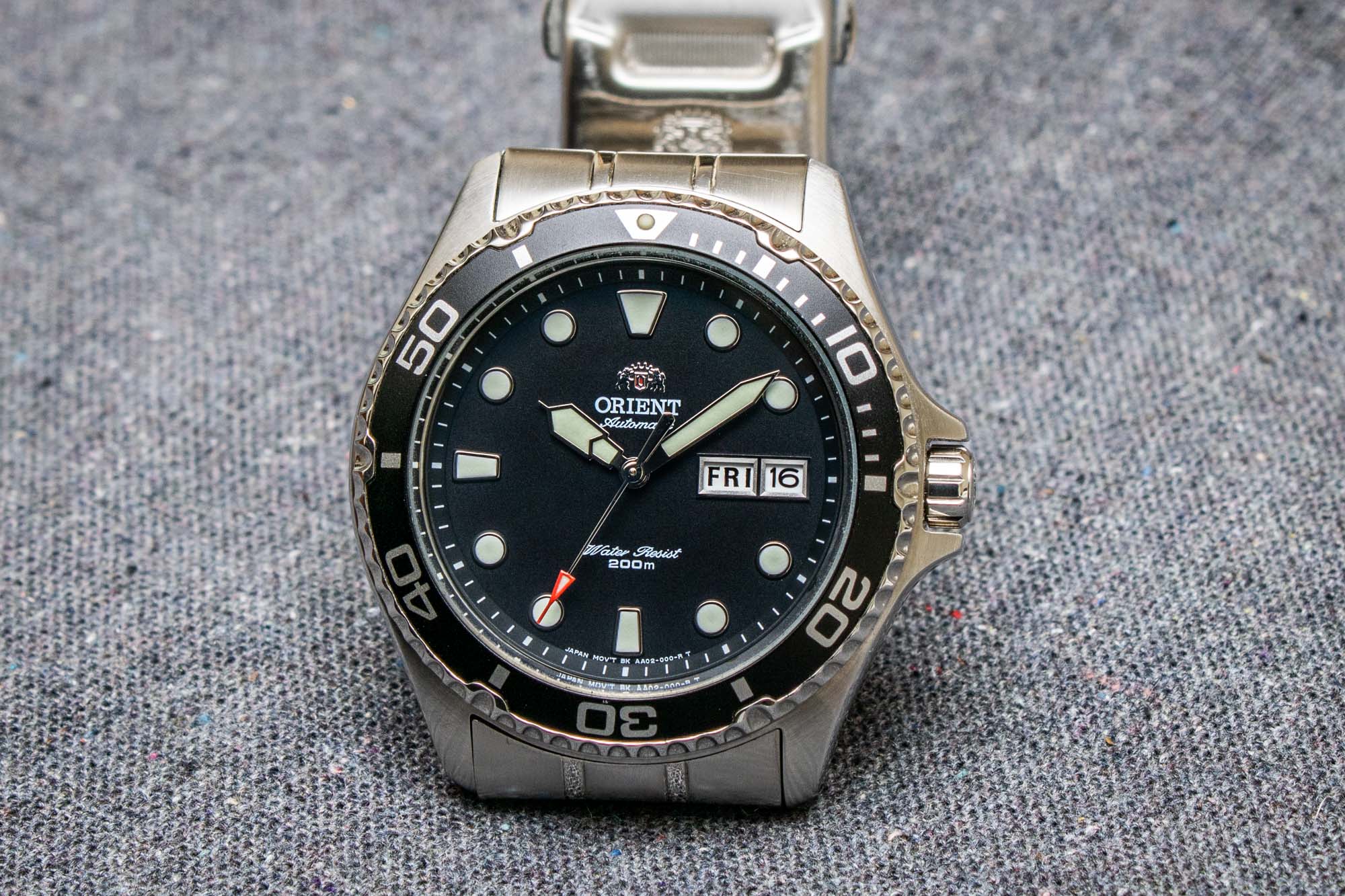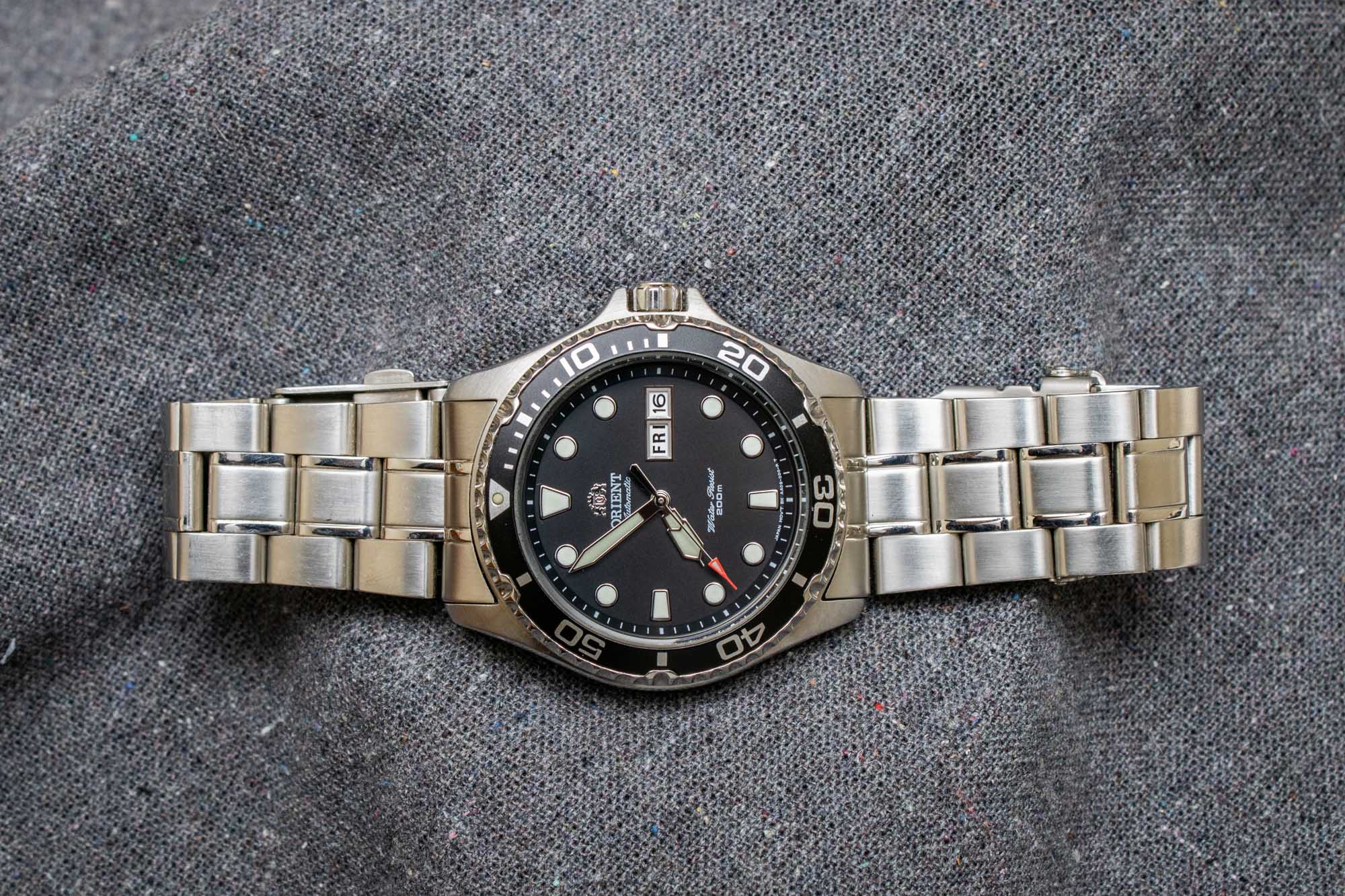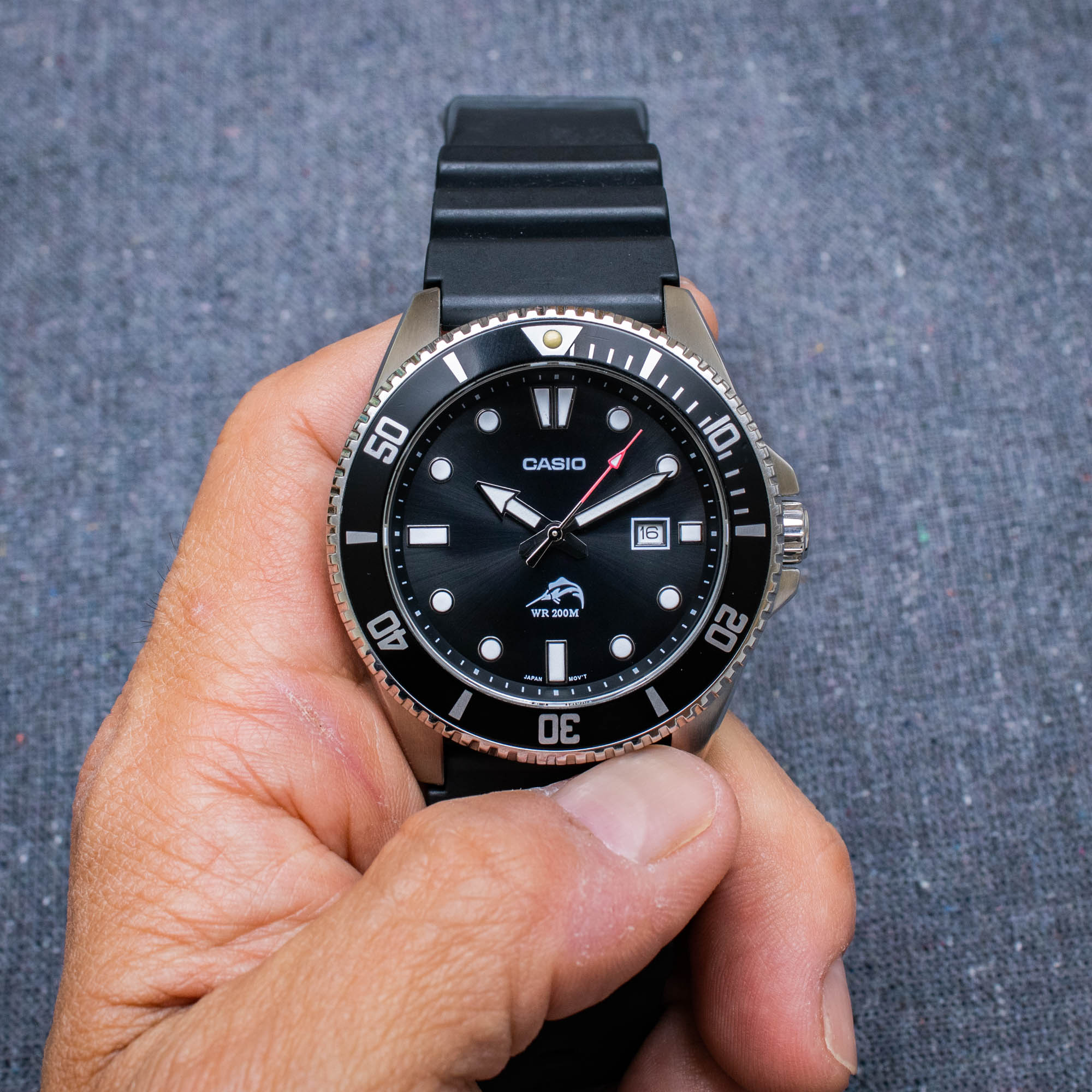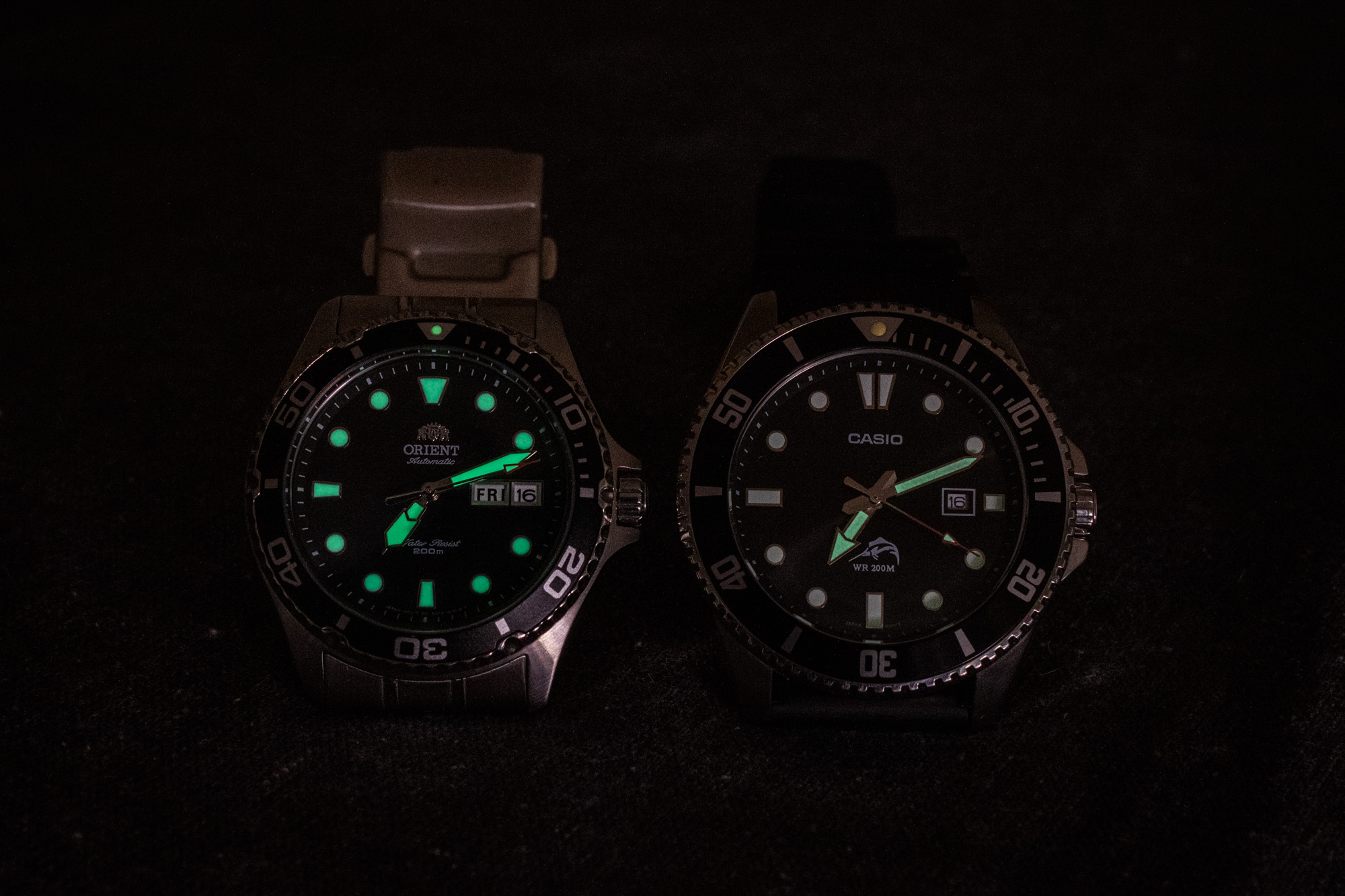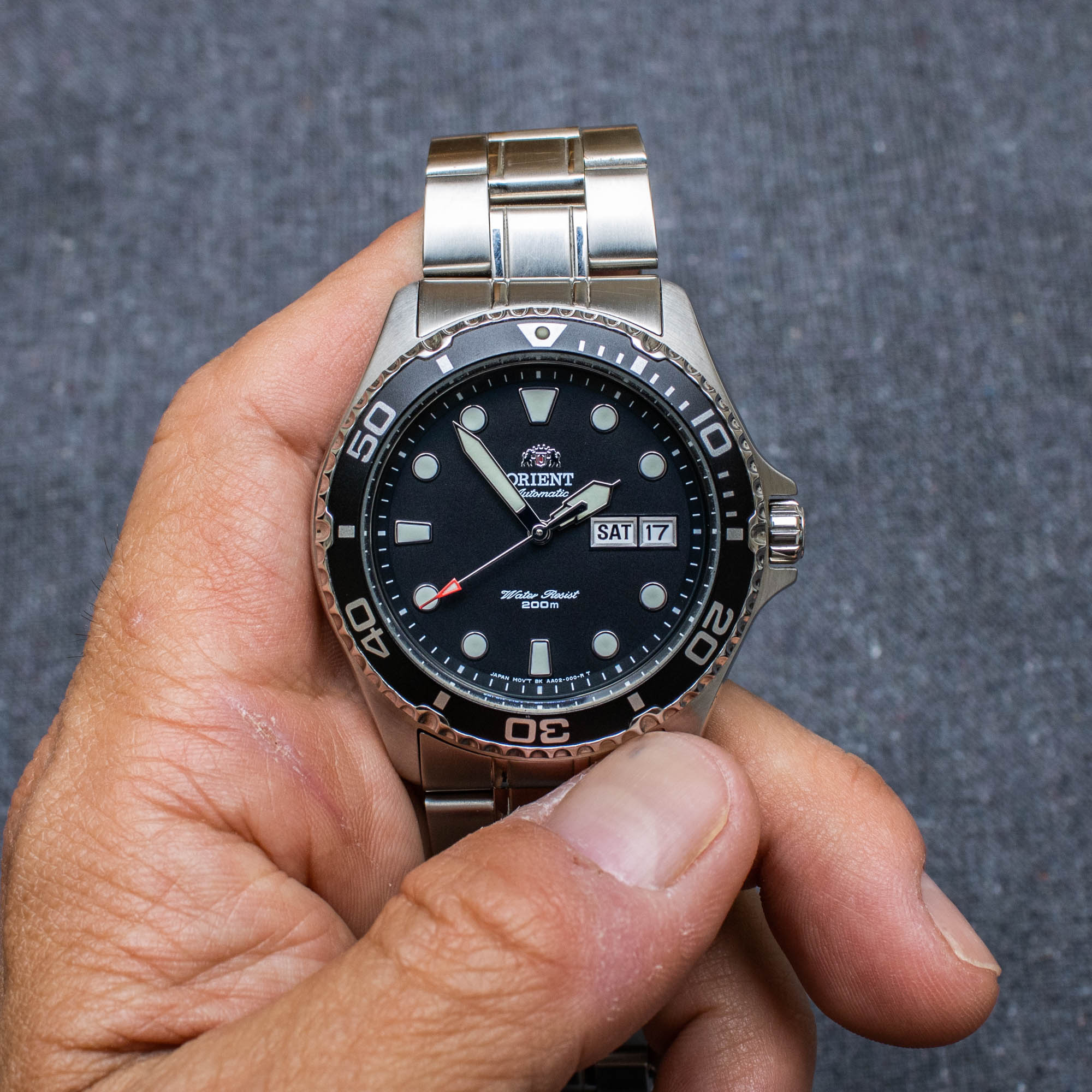
Dive watches are easily one of the most popular styles of timepieces, and this is largely due to the widespread appeal of their features. While only a small fraction of the population actually scuba dives, nearly everyone can appreciate a durable and highly water-resistant wristwatch, and countless different brands all offer some variation of this same core concept. Additionally, since most dive watches are powered by simple three-handed movements, the entry price for divers is much lower than many other types of timepieces, and a budget of just several hundred dollars will grant you access to a number of fan-favorite microbrand divers, with some of them representing the most value-packed options within the industry. That said, while microbrand dive watches frequently offer excellent value for the money, they typically aren’t the absolute least expensive options, and for those who want a decent diver at a truly rock-bottom price, a big-name manufacturer is often going to be your best option, simply due to the economies of scale that accompany their larger productions.
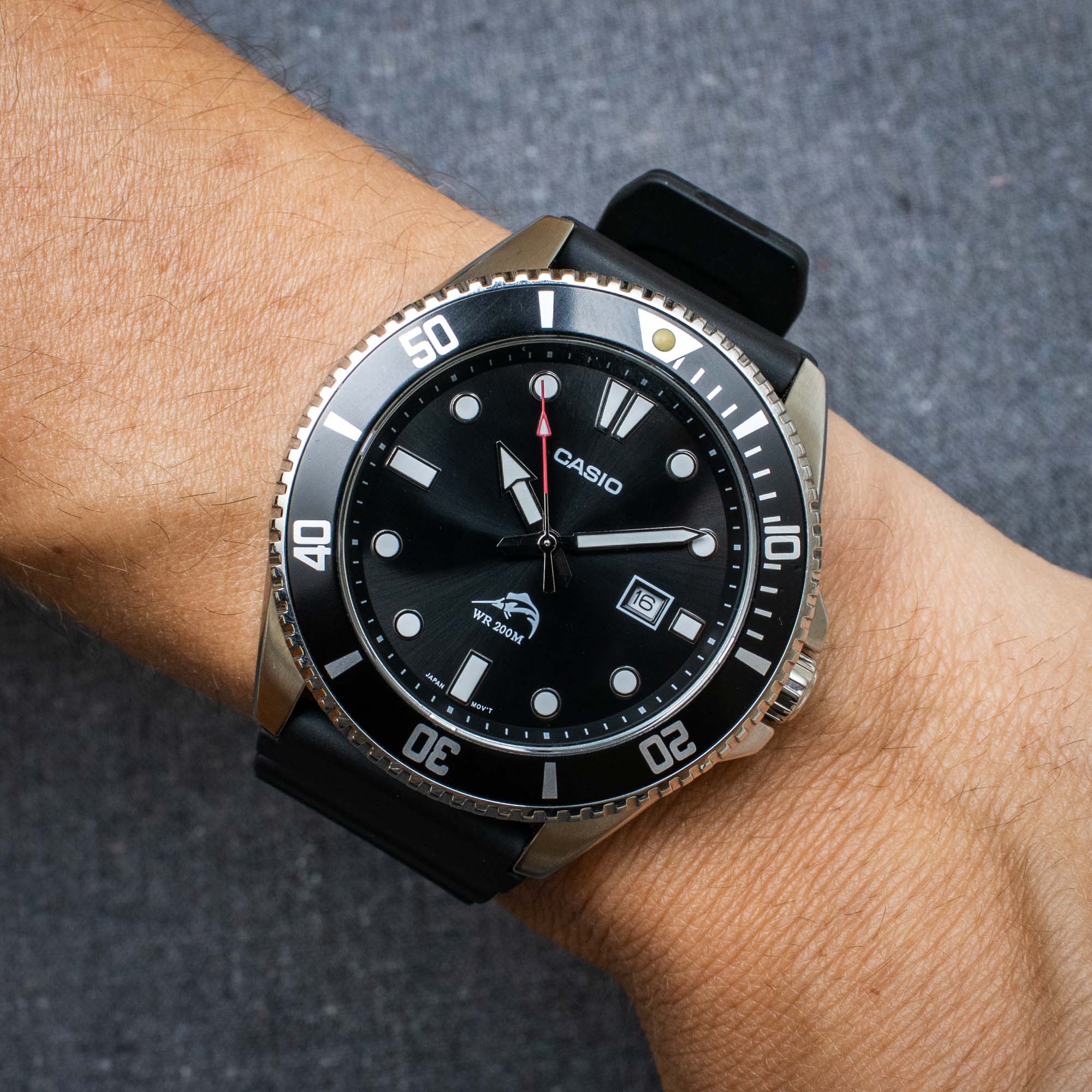
Casio is the undisputed king of highly functional and ultra-affordable timepieces, and while the brand might be best known for its G-Shock series and various digital pieces, the Japanese manufacturer also produces a wide variety of budget-friendly analog watches. Among them is the MDV106, which is nicknamed the “Duro” and often celebrated by enthusiasts as one of the best options for those who simply want a decent dive watch and would like to spend as little as possible to get their hands on one. While Casio makes a number of diver-style watches at even lower price points, the MDV106 series is the brand’s least expensive option that actually checks all of the major dive watch boxes, such as having a unidirectional bezel and a screw-down crown. Consequently, the Casio Duro is worn by countless individuals, both enthusiasts and non-enthusiasts alike, with even billionaire Bill Gates being among its famous list of owners.
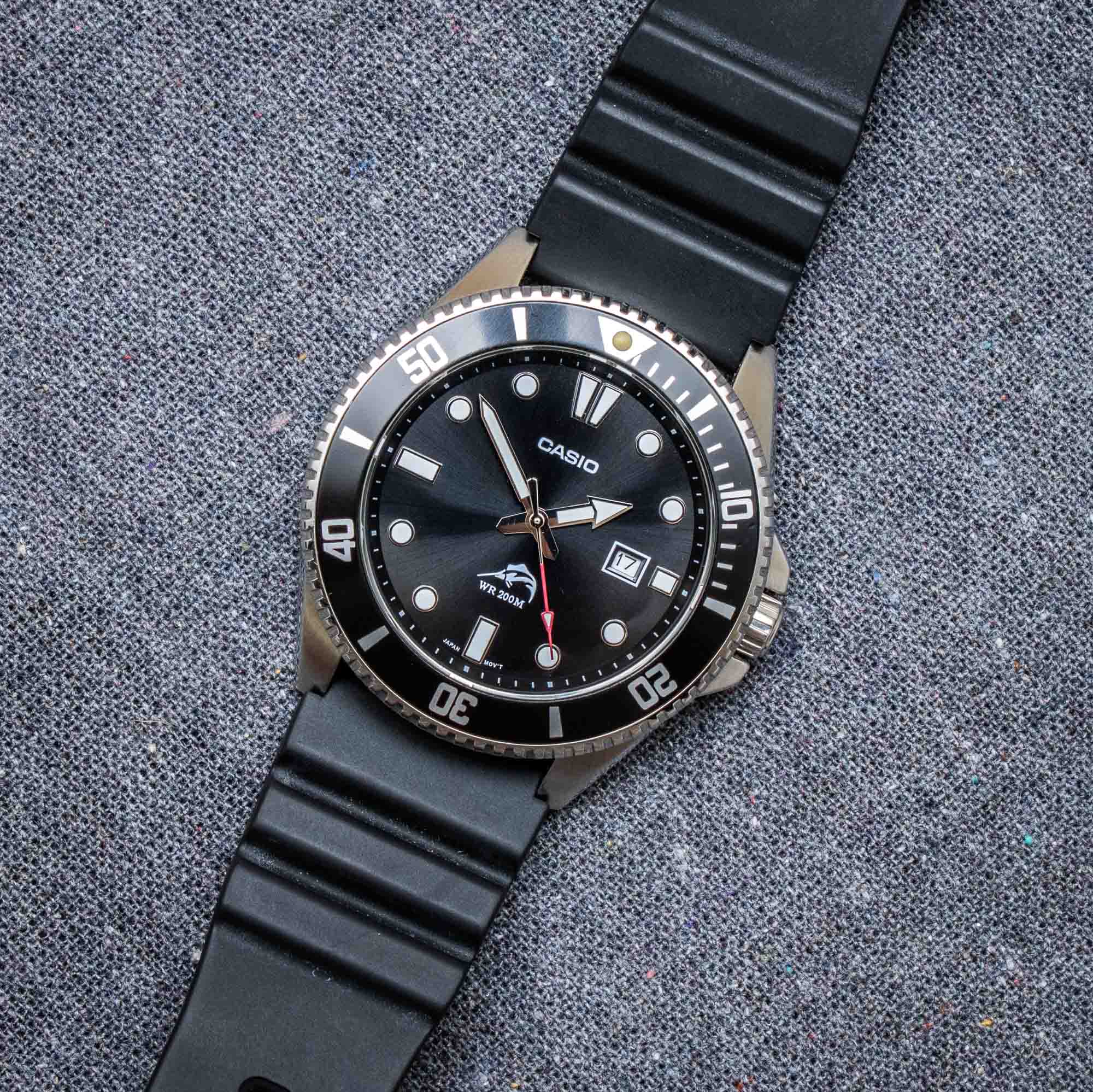
Produced in a handful of different colorways, the Casio Duro MDV106-1A is the original version, and it features a stainless steel case paired with a classic black dial and bezel. Regardless of colorway, all Casio MDV106 series watches are based upon the same stainless steel case that measures 44mm in diameter by 12mm thick, with 22mm lugs and an overall lug-to-lug profile of approximately 49mm. The dial side of the watch receives a flat mineral glass crystal that is surrounded by a 120-click unidirectional rotating timing bezel fitted with an anodized aluminum insert, while the reverse side is closed up by a solid screw-down caseback that is decorated with an engraving of a marlin fish. Protected by a set of guards that protrude from the 3 o’clock side of the case, the crown screws down to help guarantee the watch’s 200 meters of water resistance, while the 22mm lugs of the Casio Duro MDV106 are fitted with a black rubber strap that is completed by a simple stainless steel pin buckle.
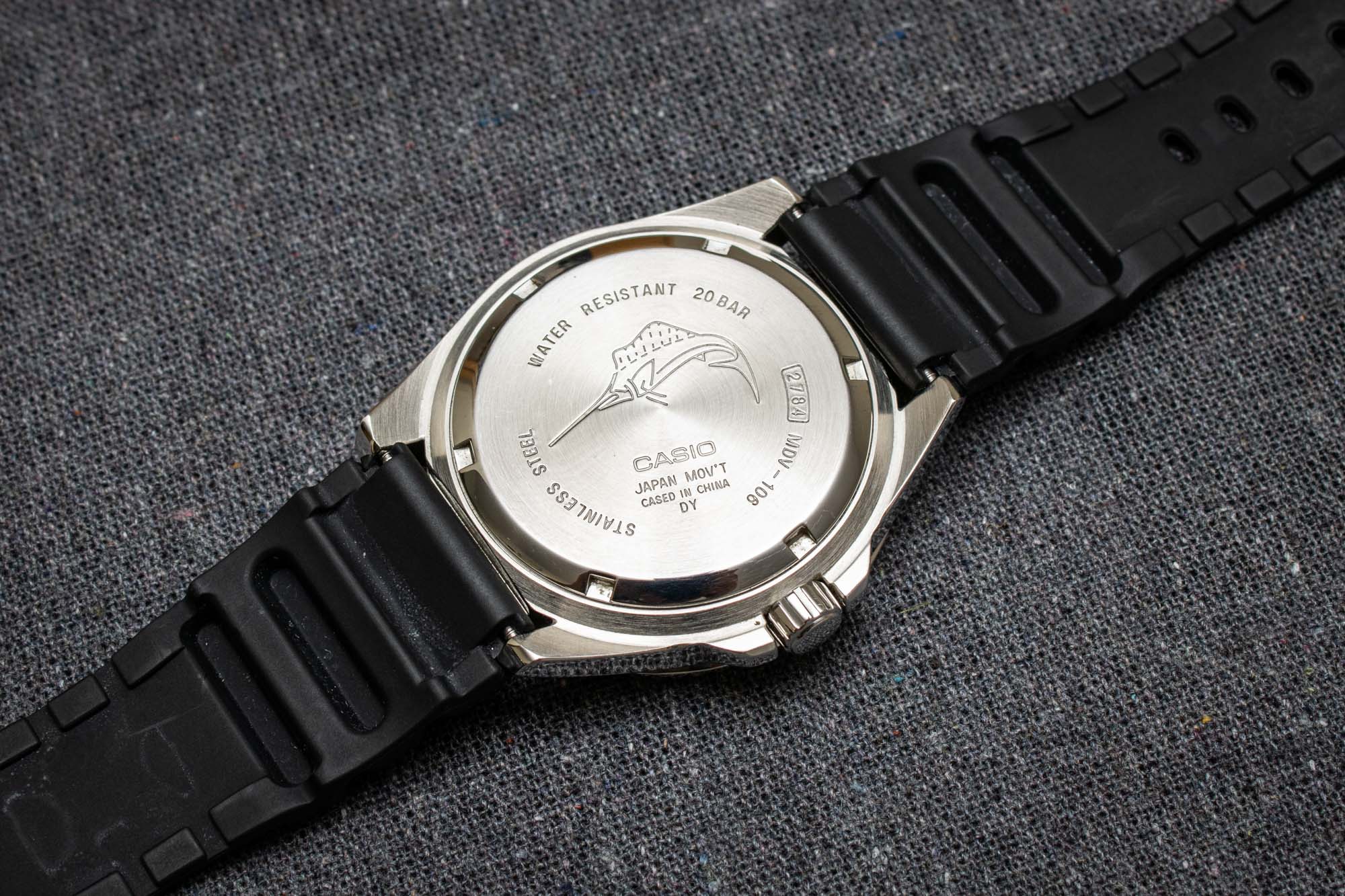
The dial of the Casio Duro MDV106-1A is more-or-less exactly what you expect from a traditional dive watch, and it features luminous geometric shapes for its hour markers with a small rectangular date window at the 3 o’clock location. On the lower half of the dial is the same marlin fish image that adorns the caseback, and rather than simply being printed along the periphery of the dial, the minute track appears on a separate angled chapter ring to create a greater sense of depth. The black surface of the dial has a subtle sunburst finish, and while the entirety of the watch embraces a black and white/silver color profile, the tip of the seconds hand is finished bright red to provide greater visibility and a subtle splash of color. Driving the trio of luminous hands is Module 2784, which is Casio’s internal code for the Miyota 2115 quartz movement, and this means that the Duro MDV106 runs on a single SR626SW power cell with a battery life of approximately three years.
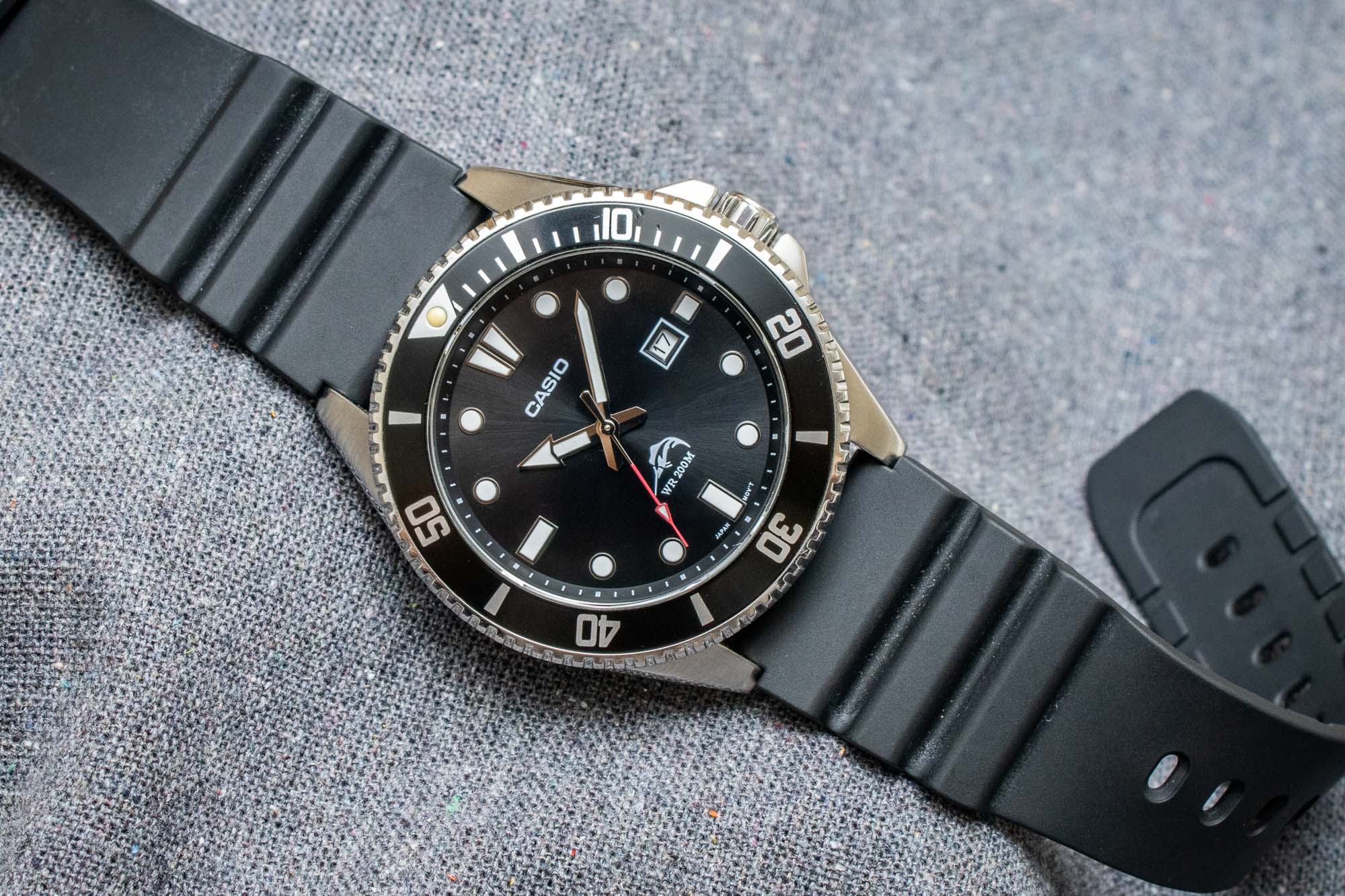
Although the Casio Duro MDV106 checks all of the major dive watch boxes in terms of its aesthetics and functionality, it is hardly a premium or enthusiast-driven item, and this is apparent in numerous different aspects relating to its design and materials. The crystal is made from mineral glass rather than sapphire, the rubber strap isn’t especially soft or comfortable, the luminous material on the hands and hour markers is sub-par at best, and the movement powering the Duro is the definition of functional yet inauspicious. That said, expectations need to be reasonable when dealing with watches at a rock-bottom price point, and given everything else that the Duro offers for the money, it’s relatively easy to overlook the fact that it isn’t actually exemplary in any one specific category. For the person who simply wants a classic analog dive watch (either due to its features or appearance), the Casio MDV106-1A is easily a top contender, as it is readily available from a virtually endless list of retailers and can be purchased for less than the price of a few rounds of drinks at your local bar.
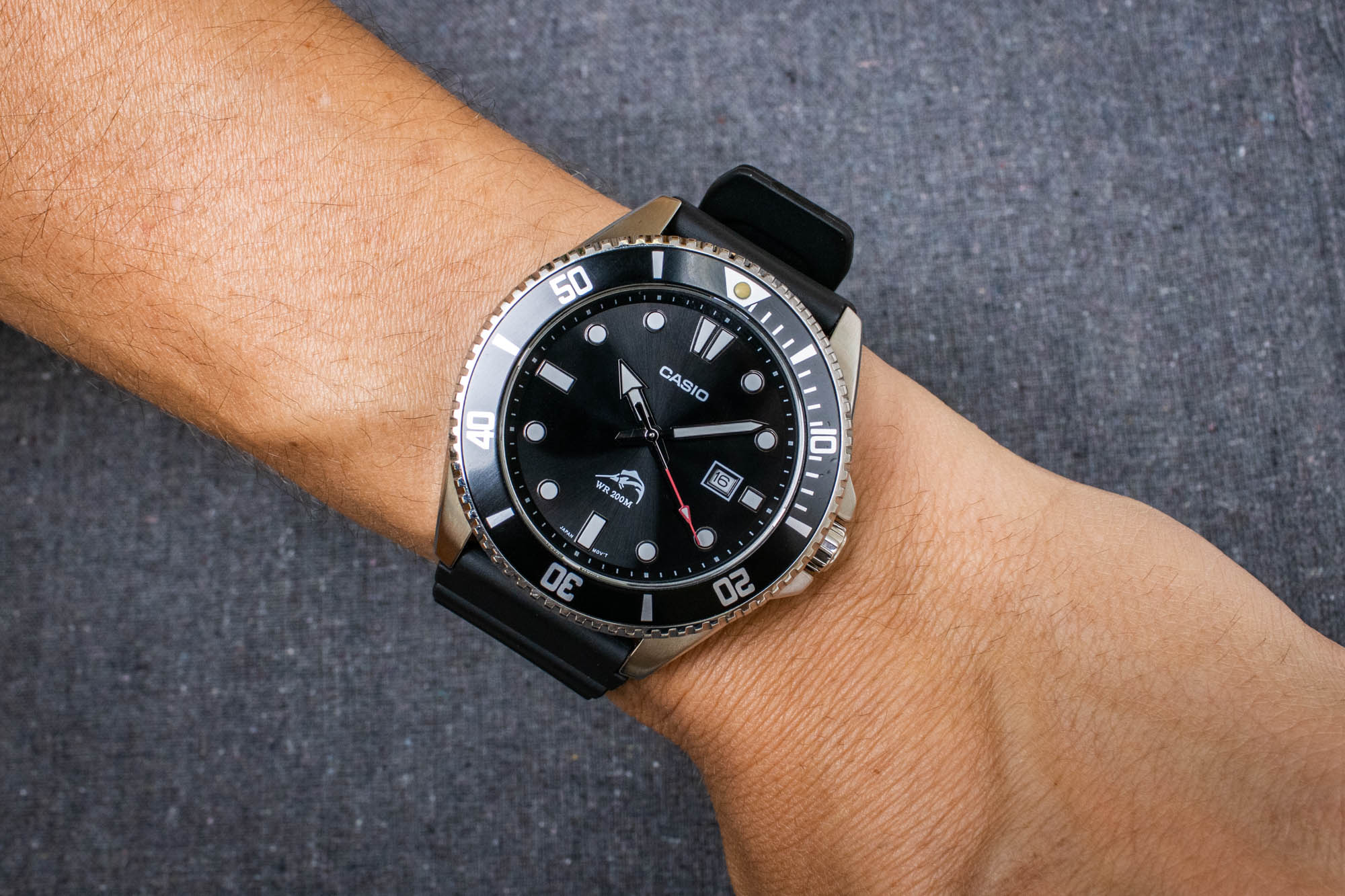
While the Casio Duro MDV106-1A is always going to be my top recommendation for those who simply want a cheap and functional diver, it is far from being the perfect watch. Despite the fact that the Duro is a cult-favorite among many enthusiasts and is more than capable when it comes to actually getting the job done, the humble Casio MDV106 won’t fully be able to scratch the itch for those who want more of an enthusiast-driven experience. For years, Seiko was my top recommendation when it came to ultra-affordable mechanical divers, and countless people started their collecting journeys with something like an SKX007 that they picked up for less than a couple hundred dollars. However, Seiko has been releasing continuously more expensive watches, and it is now rather common to find the brand’s Prospex divers priced higher than comparable offerings from many entry-level Swiss brands.
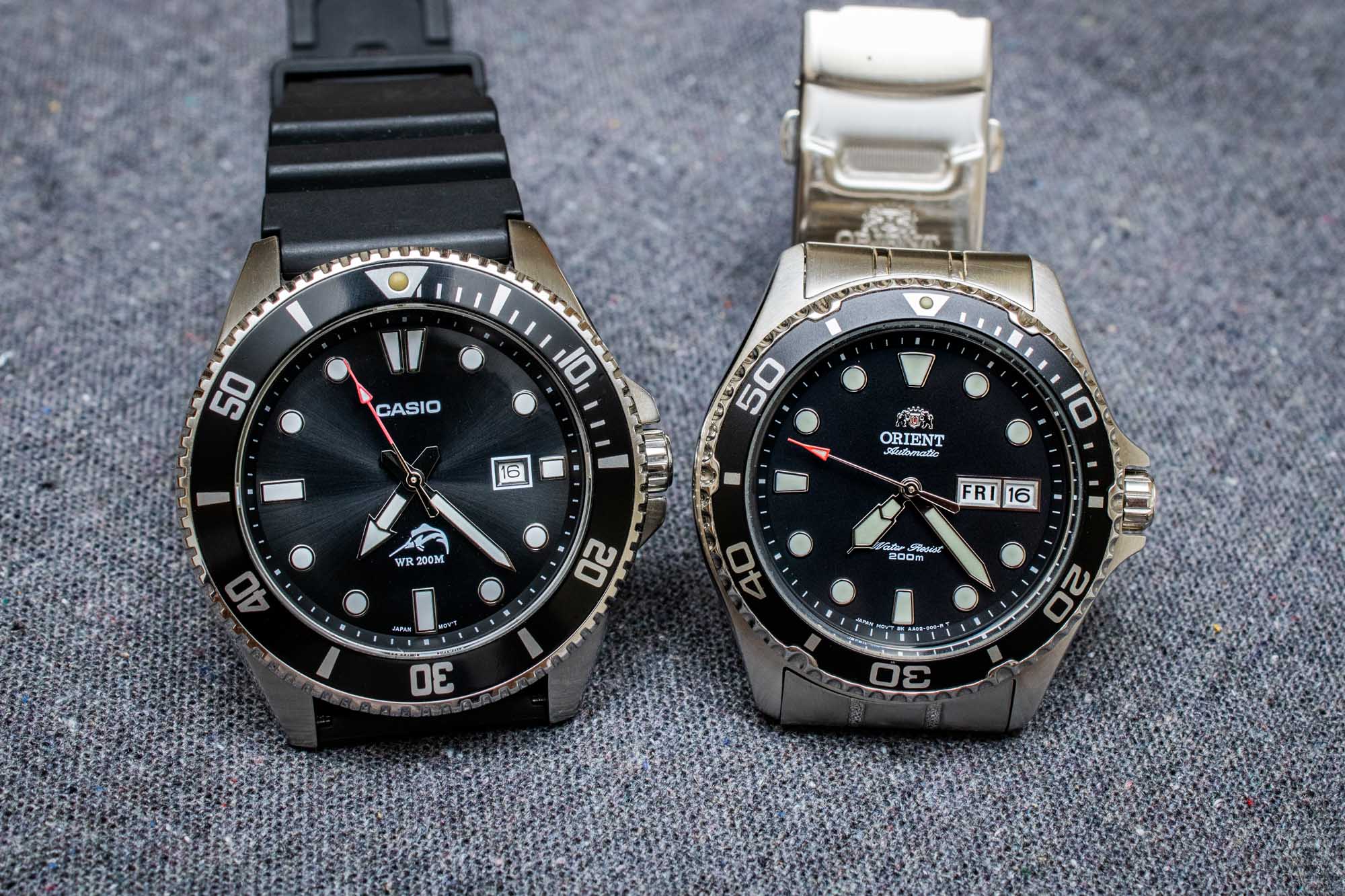
Back when the Seiko SKX007 was still in production, some of its closest competitors were the Orient Ray and Mako divers, which were priced slightly below Seiko’s entry-level model, with the actual difference only equal to the cost of a few additional straps. These days, Seiko’s least-expensive dive watches are generally the various Turtle and Samurai models, but when it comes to actually buying one, you will end up paying around two to three times the price of what it takes to purchase an Orient Ray or Mako. Technically speaking, the original Ray and Mako models have been discontinued for a number of years, although they still exist in the form of the Ray II and Mako II, which offer largely the same overall package but feature an updated movement that does not require the additional calendar corrector pusher on the side of the case. Even the Ray II and Mako II have been around for quite a few years now, although they still remain in production as Orient’s entry-level dive watch offerings (at least at the time of writing), and currently might just be some of the best value for the money when it comes to bottom-dollar automatic dive watches.
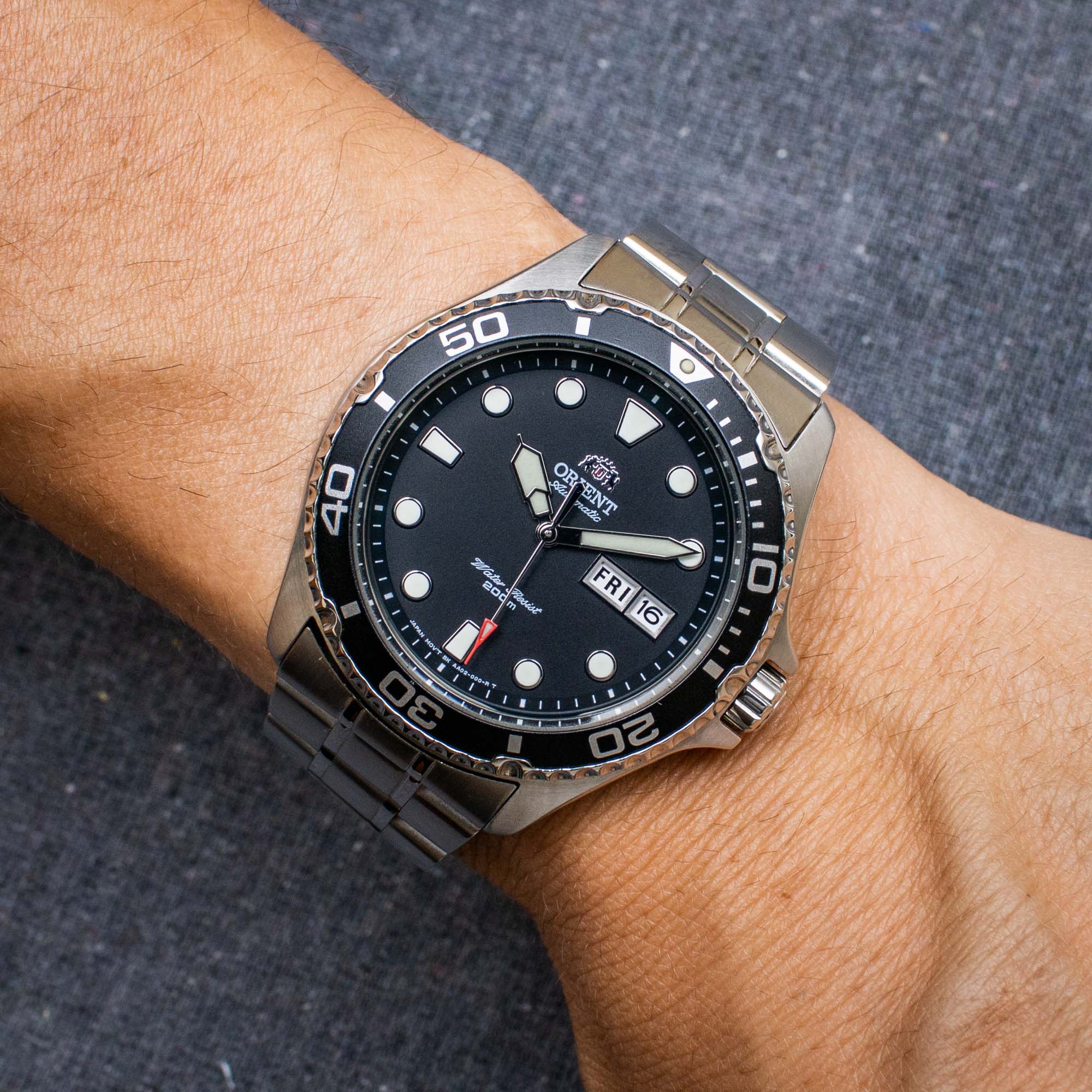
Aside from small differences to their dials, hands, and bezel inserts, the Orient Ray II and Mako II are essentially the exact same watch, with the Ray II (featured here) being the more traditional option between the two, while the Mako II has sword-shaped hands and Arabic numeral markers at the cardinal points on its dial. Both models are otherwise identical with a stainless steel case that measures 41.5mm in diameter by 13mm thick, with 22mm lugs and an overall lug-to-lug profile of 47mm. Additionally, both the Ray II and Mako II are available in a number of different colorways, with the ref. FAA02004B9 pictured here being the most traditional option with its matte black dial and matching black aluminum bezel insert. Just like the Casio Duro MDV106-1A, the Orient Ray II is fitted with a mineral glass crystal surrounded by a 120-click unidirectional rotating timing bezel, and similar to the Duro, the Ray II also features a screw-down crown and caseback to help support its 200 meters of water resistance.
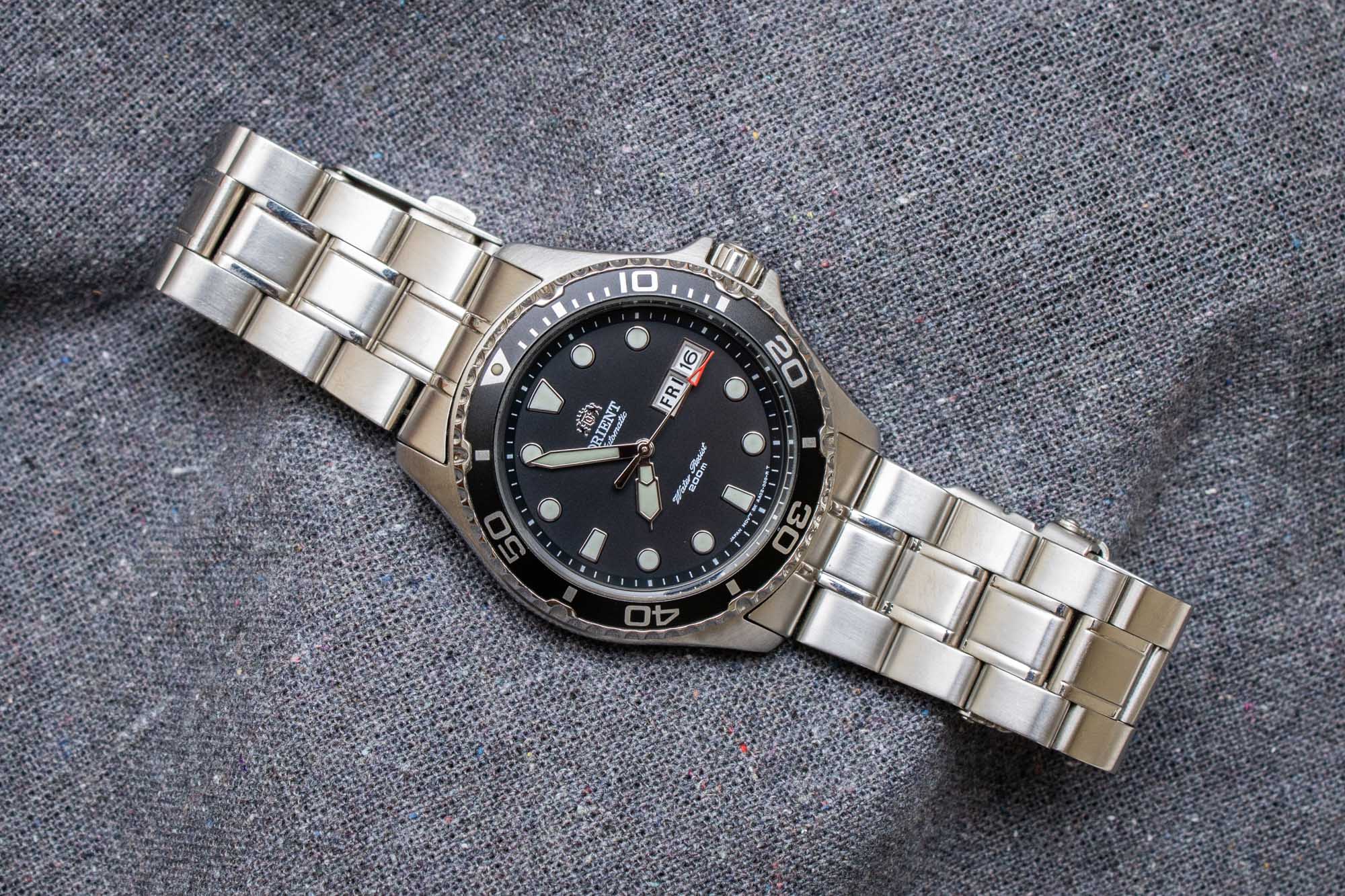
Despite having similar on-paper specs and features, the Orient Ray II is a more expensive watch than the Casio Duro, and everything about it is executed to a higher standard. The crown is signed, the edges of the crystal are beveled, the lume on the dial and hands is exponentially superior (both in terms of its brightness and the duration of its glow), and you also get the added functionality of a day display sitting next to the date window at the 3 o’clock location. Similar to the Casio Duro, the tip of the seconds hand on the Orient Ray II ref. FAA02004B9 is finished bright red for a subtle pop of color, and red is also used for the Sunday markings on the calendar disc, which make their appearance once per week. With that in mind, arguably the single most important detail about the Orient Ray II is that rather than running on a battery-powered quartz movement, the Ray II is powered by Orient’s fully-mechanical Caliber F6922 automatic movement, which runs at a frequency of 21,600vph (3 Hz) with a power reserve of approximately 40 hours.
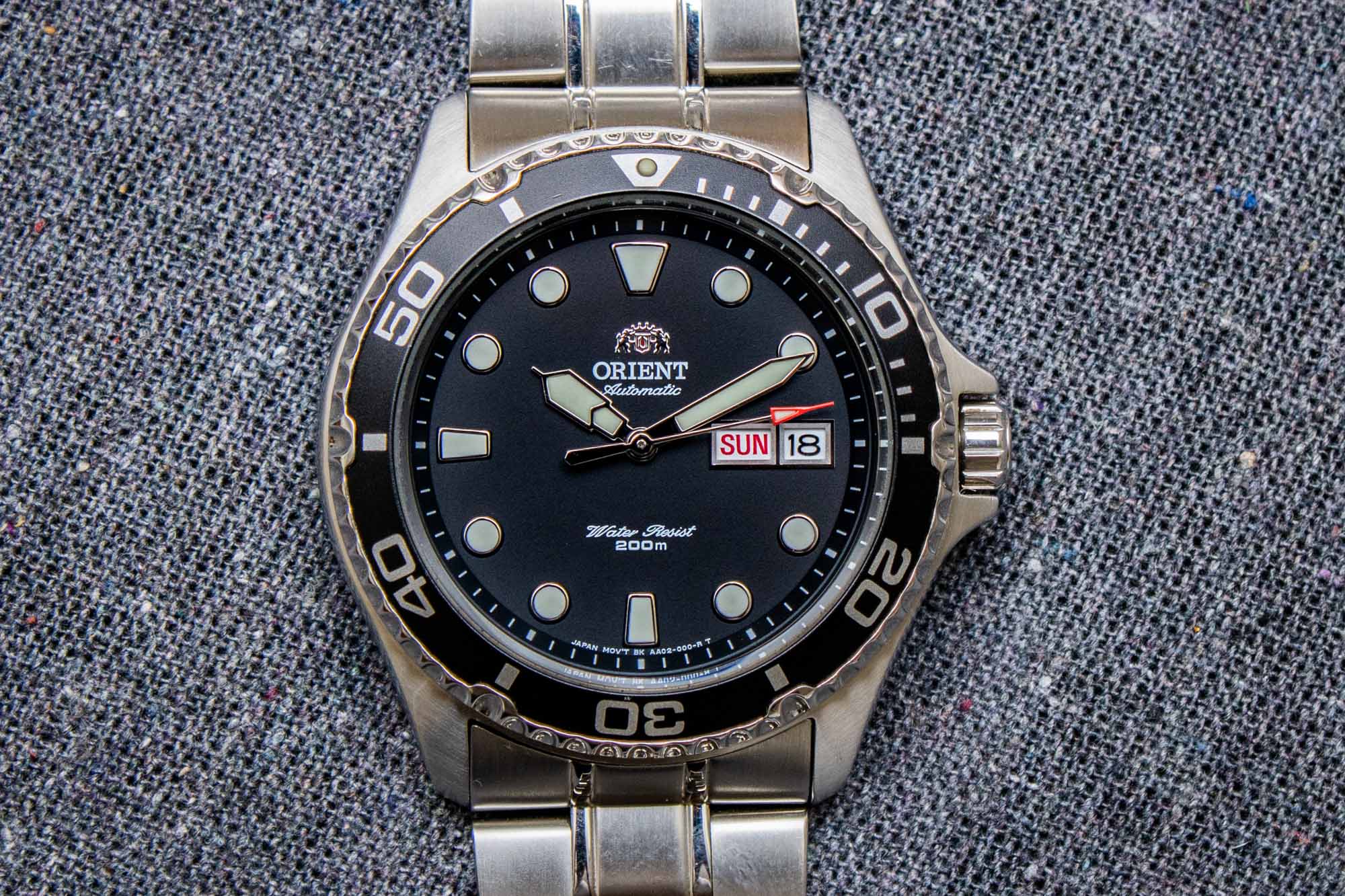
While you can get the Orient Ray II on either a rubber strap or stainless steel bracelet, I would personally recommend getting the bracelet version, as the price difference is negligible, and the bracelet itself isn’t terrible, despite the fact that it features hollow end-links, a stamped clasp, and simple friction-fit pins for the removable links. While the clasp certainly doesn’t have any type of integrated extension system, it does feature a double push-button release with an additional fold-over safety latch, plus the actual bracelet links themselves are solid, despite the fact that the end-links are hollow. Realistically speaking, both the Casio Duro and Orient Ray II will benefit from swapping out their standard straps and bracelets for decent third-party options, although given how little the stainless steel bracelet costs you when purchasing the Ray II, it’s easy to justify the nominal additional expense, even if it is just so that you can have the option of having a bracelet with end-links that match the case.
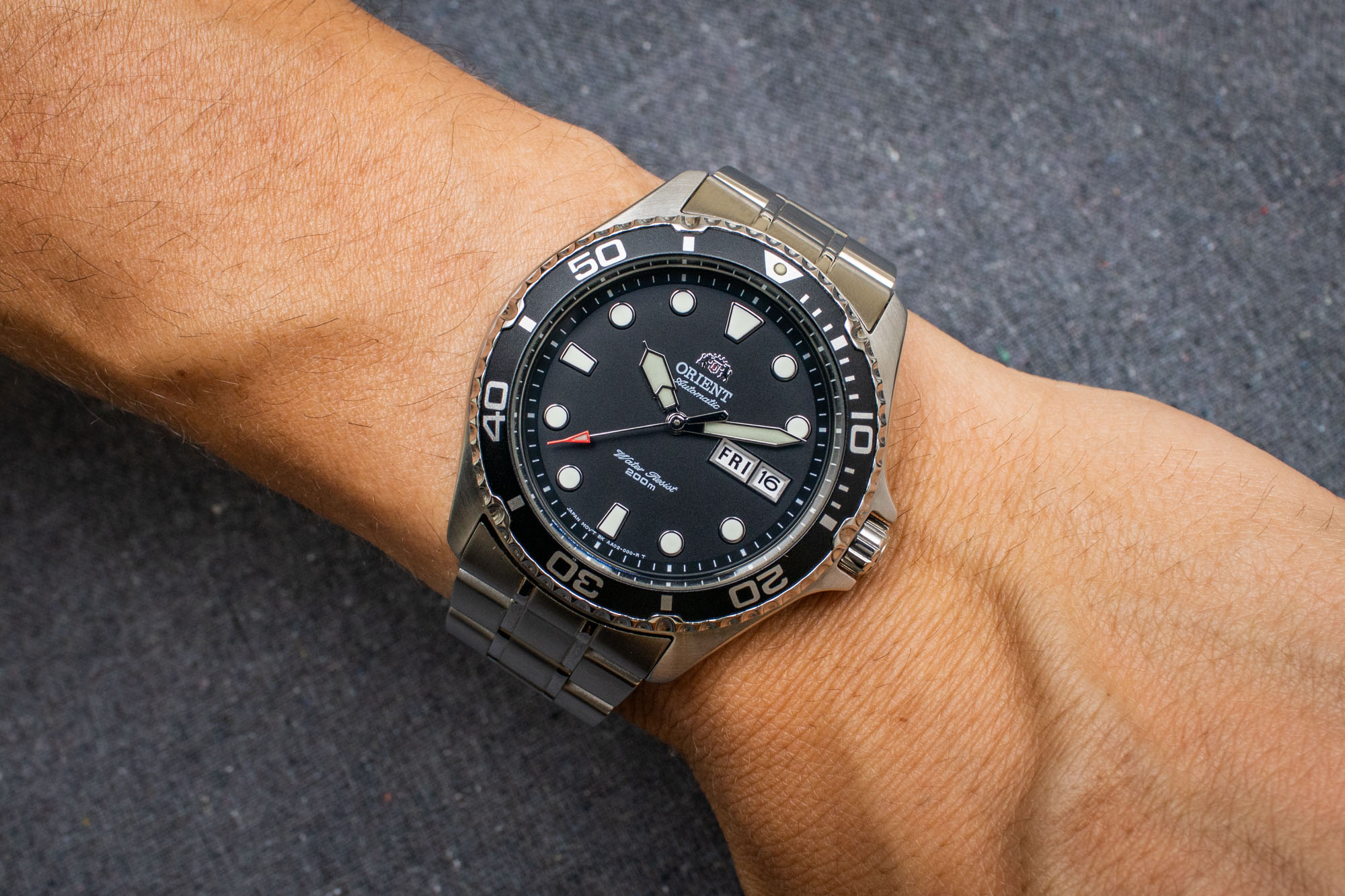
Casio and Orient are brands that produce watches for the masses, which means that you can often find both of these budget-friendly divers at discounts compared to their original retail prices. The classic Casio Duro MDV106-1A with its black dial and bezel is accompanied by an official retail price of $69.95 USD, although you should realistically expect to pay somewhere closer to $50 USD if you do a little bit of searching. Similarly, while the Orient Ray II ref. FAA02004B9 is priced at $440 USD on the brand’s website, I don’t know a single person who has ever paid anywhere close to that value, and even Orient USA’s own website has this exact model available on sale for $210 USD. Additionally, with a tiny bit of searching, you will likely be able to find Ray II watches for prices that are closer to $150 USD, which ultimately represents a rather compelling offering, as this is even less than what you will pay for a Seiko 5 and significantly below nearly all of the various value-packed microbrand divers. Although a bottom-dollar dive watch is never going to be perfect, you can always spend more money to get yourself superior features, and both the Casio Duro and Orient Ray II represent highly compelling options that significantly exceed their firmly humble price points. For more information on the Casio Duro MDV106-1A or Orient Ray II, please visit either the Casio website or Orient website, respectively.

